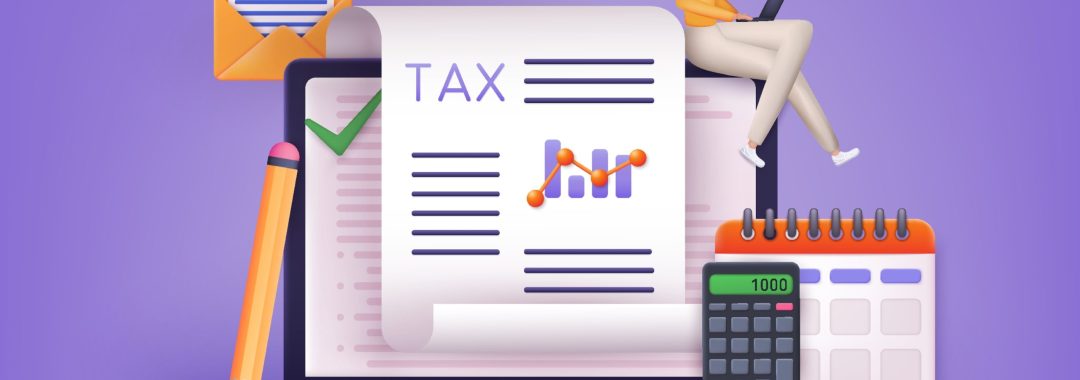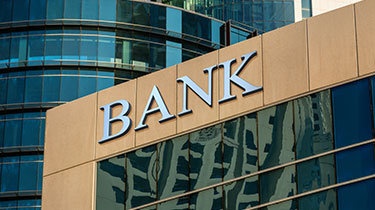Tax disputes can be a significant drain on resources for any business, and with recent data suggesting that over 60 per cent of businesses are currently embroiled in a tax dispute with HM Revenue & Customs (HMRC) that has lasted more than a year, this is clearly a widespread issue.
Category Archives: Latest News
Inflation and increased interest rates – What does it mean for businesses?
Office for National Statistics (ONS) data revealed that the Consumer Price Index (CPI) – the official measure of inflation – only fell to 8.7 per cent in the 12 months to May 2023.
While the rate of inflation is not as high compared to previous months, where it peaked at 10.4 per cent in February, many economists had predicted a significantly lower rate of inflation.
As inflation is falling at a slower rate, the Bank of England (BoE) has attempted to curb this by increasing the base interest rate further to five per cent.
High inflation and the ever-increasing base rate are having a significant impact on many businesses in a number of different ways including:
Increased costs
Higher prices and costs are feeding the current rate of inflation. As the cost of raw materials, labour, and operational expenses rise, businesses are squeezing their profit margins.
While larger businesses may have the capacity to deal with these increased costs, small and medium-sized enterprises (SMEs), often operating on tighter budgets can find this situation particularly challenging.
Some businesses facing increased costs are mitigating this by raising the prices of their products or services.
This move needs to be handled carefully, however, as if prices are increased too much then it could drive customers away and cause a loss in revenue, while also feeding into inflation.
Equally, SMEs need to explore how they can drive existing costs down where possible by reviewing arrangements with suppliers and service providers.
Difficulty borrowing
Interest rate increases naturally mean that taking out loans will be more costly for businesses looking to borrow and will also affect any existing loans that are not on a fixed rate.
Increased interest rates can be a significant worry for businesses carrying a substantial amount of variable-rate debt, as higher interest rates ultimately mean higher borrowing costs.
While the current five per cent base rate is the highest it has been since 2008, economists predict that interest rates could peak at six per cent by the end of 2023 – something businesses should consider as they plan their budgets for the next 12 months.
The higher rates of interest have also affected access to finance, as lenders adjust their approach to lending due to concerns about businesses servicing their debts. Many are, therefore, applying more stringent credit and affordability checks.
HMRC debts
Tax debts to HM Revenue & Customs (HMRC) track the BoE base rate. In its simplest form, this means that the rate of interest for the late payment of taxes is calculated as the base rate plus 2.5 per cent.
The rate of interest paid by HMRC on the overpayment of tax is also calculated as the base rate minus one.
There are various other rates of interest charged by HMRC, which can be found here. As the rate of interest increases, so does the cost of late tax payments.
Although inflation rates are currently higher than predicted, the BoE has stated that the increase in interest rates will see the inflation rates fall in the coming months, as they attempt to push it down to the two per cent national target.
If you are a business owner who would like assistance navigating the current economic climate, please contact our expert team today.
HMRC sets its sights on SMEs over UK tax gap
The tax gap in the UK – the difference between the amount of tax owed and the amount that has been paid – remains wider than anticipated due to SMEs, according to HM Revenue & Customs (HMRC).
The tax authority’s figures for 2021/22 show that small and medium-sized enterprises (SMEs) contribute significantly to the national tax gap, with 56 per cent (£20.2 billion) of the total gap (£36 billion) accounted for by underpayments or non-payments by these businesses.
HMRC attributes much of this gap to careless errors made by SMEs, which is why ensuring compliance can help to narrow this gap and prevent SMEs from being hit by easily avoidable tax penalties and investigations.
Understanding tax obligations
Businesses need to have expert knowledge of the different taxes they are liable for. These include Corporation Tax, VAT, Income Tax and National Insurance Contributions via PAYE.
According to HMRC, Corporation Tax, Income Tax, National Insurance Contributions and Capital Gains Tax together account for 65 per cent of the total tax gap.
Organisation and meeting deadlines
SMEs need to remain organised and keep meticulous records of all financial transactions. A lack of sufficient care was responsible for almost a third (30 per cent) of all underpayments of tax.
It seems an obvious observation but ensuring that all tax returns and payments are submitted by the relevant deadlines will mean SMEs avoid penalties for late submission.
Delays in payment or submission can also increase the chances of errors as a last-minute rush often leads to carelessness.
Stay up to date with tax laws and changes
Tax laws are subject to change and being unfamiliar with any updates could lead to errors in your tax reporting that result in penalties, fines and investigations.
SMEs should ensure that they are up to date with the latest changes in tax laws, rates, and deadlines.
Maintain good communication with HMRC
If SMEs do find themselves to be in a position where they’re unable to pay their taxes on time, they should reach out to HMRC and explain the situation. They might be able to offer a payment plan or provide other solutions.
With HMRC intensifying its focus on non-compliance by small businesses, SMEs must pay close attention to their tax obligations.
If you are an SME business owner and would like assistance with your tax obligations, our expert team of tax professionals are here to help.
The hidden economy: What income should you declare?
The number of individuals participating in the UK’s ‘hidden economy’ is increasing according to recent research.
A surge in additional income streams, from moonlighting to online trading, has led to millions of taxpayers failing to declare additional earnings to HM Revenue & Customs (HMRC).
HMRC’s latest figures highlight the extent of this issue. They showed that an estimated 8.8 per cent of the UK adult population – equivalent to nearly six million individuals – are involved in the hidden economy. This figure has nearly doubled since 2016.
While most of this undeclared tax is considered low-level, with only 1.1 per cent estimated to have earned over £5,000 of undeclared income, this group alone represents a significant £3.36 billion of tax-free earnings.
Participants in the hidden economy include those who supplement their taxed income with cash work (moonlighters), accounting for 65 per cent of the total and those who do not declare any earnings at all, which represent 35 per cent. Some businesses also contribute to this problem by failing to register for VAT.
While it is clear that some of these activities are deliberate and knowingly entered into, HMRC’s survey suggests that there is also a distinct lack of knowledge about tax obligations.
As an example, 28 per cent of those surveyed believed that if they were already paying tax, they did not need to inform HMRC about any additional forms of income as long as this did not place them into a higher tax band.
For those with more than one source of income, it is vital to declare all earnings to HMRC, regardless of whether this means being pushed into the next tax band or not.
This includes casual work, selling goods or services, rental income, and trading on platforms such as eBay.
Consequences of non-declaration
Non-declaration of additional income can carry significant implications for those involved.
These penalties vary in severity and those found guilty can face anything from a hefty fine to a prison sentence. Individuals need to ensure that they declare any additional income.
How to declare additional income
To declare additional income to HMRC, individuals can use the Self-Assessment tax return system.
This system requires taxpayers to report their income for each tax year, which runs from 6 April one year to 5 April the next, by 31 January of the following year.
If individuals have only recently started earning additional income, they must notify HMRC by 5 October following the end of the tax year in which they began to receive the additional income in order to register for Self-Assessment.
If you are worried that you may have earned additional income and have not declared this to HMRC, our expert tax advisors are on hand to assist.
Management accounts: The importance of having a clear view of your business during uncertain times
In times of economic uncertainty, businesses should have a clear plan to ensure that they can navigate any potential financial pitfalls.
One of the best ways businesses can do this is with the use of management accounts.
What are management accounts?
Management accounts are financial reports that contain information vital to your business, such as your profits and losses, a balance sheet, and a cash flow forecast.
Unlike statutory accounts which are produced annually, management accounts are produced on a monthly or quarterly basis.
This frequent reporting allows for up-to-date financial insights, enabling businesses to constantly respond to changes in the market environment in a proactive manner.
How can they help?
Management accounts can provide businesses with the financial data needed to make necessary adjustments in real-time.
It enables business owners to make strategic decisions based on concrete information rather than guesswork, which can help when investing, seeking finance or making a business more resilient during difficult times.
By focusing on detailed cost analysis, management accounts can also drive operational efficiency, a critical aspect during uncertain times.
They offer key insights into cost structures, making it possible to identify inefficiencies and areas of waste that can be targeted for cost reduction. This can ultimately lead to improved profit margins, better cash flow management, and increased financial resilience.
Although primarily designed for internal use, management accounts can also strengthen communication with key stakeholders.
If you would like more information about management accounts and how we can help you use them to strengthen your company’s financial outlook, please contact us today.
Time to exit: New research shows many business owners are planning ahead
New research from wealth management firm Evelyn Partners has revealed that the majority of business owners with companies that earn more than £5 million annually are preparing for an exit.
With 65 per cent of UK business owners contemplating the sale of their company, and almost half intending to do so within the next year, the reasons behind these accelerated plans vary.
The primary motivator seems to be the looming General Election within the next 15 months, which has instilled concerns about a potential change in Government and consequential alterations to taxation. This political uncertainty has prompted a quarter of business owners to fast forward their exit plans.
Another significant reason for considering the sale of a business is the difficulty of accessing long-term capital and investment. Increasingly strict conditions for financing have pushed one in four to contemplate selling.
The complications surrounding post-Brexit trade arrangements and the effects of high inflation have also pushed many business owners to sell.
With inflation driving up the cost of labour, energy, and materials, about 23 per cent of business owners have chosen to sell their businesses for this reason.
Personal finance challenges also factor into this trend, as business owners look to liquidate the equity in their businesses.
However, about 36 per cent have chosen to delay their exit plans in hopes of obtaining a better price for their business.
The preferred exit strategy for these businesses is selling to private equity. In fact, 20 per cent of business owners are looking to sell to private equity, with 11 per cent of them aiming to sell a minority stake, while nine per cent are planning to sell a majority stake.
Employee ownership trusts are also gaining popularity, with 18 per cent of business owners considering this route.
Are you a business owner who has considered an exit strategy? Please contact us today to find out how we can assist you.
Are banks supportive of SMEs and willing to assist their growth?
Small and medium-sized businesses (SMEs) have struggled to access finance from banks for a while, with many having to turn to alternative lenders and sources to secure much-needed funding for investment.
However, the scale of this issue has not previously been explored in significant detail until now. A new study has found that almost three-quarters of SMEs believe that their bank actively discriminates against them in favour of lending to larger companies.
Independent polling agency, Censuswide, surveyed 500 UK SME owners to explore whether they had access to finance and sufficient support from their bank.
Whilst the headline figure on lending is concerning, what stood out significantly was the seeming reluctance of banks to back SMEs’ plans for growth.
Perhaps that is why the initial headline figure on bank lending and support is so worrying to many business owners.
Need finance?
Higher interest rates and more cautious lenders have resulted in many businesses struggling to access funding, especially from banks, as this study has shown.
A traditional bank loan is only one means of obtaining the funding required to meet your investment plans and there are several other sources that owners can consider.
These include, but are not limited to:
- Venture capital investment, including tax-efficient EIS and SEIS funding
- Peer-to-peer finance
- Crowdfunding
- Pitch events
- Grants
Each of these forms of finance and funding has pros and cons that should be carefully considered.
If you are struggling to find funding for your business strategy it is important to seek professional advice to understand the various options available to you.
Speak to our team today to find out how we can help you with your plans for growth and investment.
Understanding salary and dividend payments for business owners and directors
As an owner or director, it may be possible for you to pay less tax on your income from your company through dividends.
Car vs Van – Tax treatment of electric vehicles
There have been several important tax decisions previously regarding the difference between vans and cars, but how do the different rules regarding electric vans affect their tax treatment?
Let’s use a hypothetical:
A Ltd has acquired a new electric company van that its director, Bob, uses to go to and from work, as well as during the regular workday.
However, Bob also has the van in the evening and at the weekend for his private use. For Benefit in Kind (BiK) purposes, the company classes the vehicle as an electric van.
Unlike company cars, the BiK charge for an electric van is nil. Therefore, employees with electric company vans can, where permitted to do so by their employer, use their company van for unrestricted private use without any associated tax charge.
Unfortunately, HMRC disagrees with this judgement and argues that the van, is in fact, an electric car and not a “goods vehicle”, as defined by Section 115 ITEPA (Income Tax (Earnings and Pension) Act) 2003.
This states:
(1) In this Chapter— “car” means a mechanically propelled road vehicle which is not:
(a) a goods vehicle,
(b) a motorcycle,
(c) an invalid carriage, or
(d) a vehicle of a type not commonly used as a private vehicle and unsuitable to be so used;
“van” means a mechanically propelled road vehicle which:
(a) is a goods vehicle, and
(b) has a design weight not exceeding 3,500 kilograms, and which is not a motorcycle.
(2) For the purposes of subsection (1)…
“goods vehicle” means a vehicle of a construction primarily suited for the conveyance of goods or burden of any description;
In reaching such a decision, HMRC would need to prove that the van in question had multiple purposes, beyond just the transport of goods.
Many modern vans have been designed and are advertised as multipurpose vehicles, and there are a number on the market that have crew cabs or “kombi” roles, that allow for passengers as well as goods.
This confusing situation has been tested many times, not least in the case of Payne, C Garbett, Coca-Cola European Partners GB Ltd v HMRC at the Court of Appeal on 20 July 2020.
In this case, HMRC was able to prove that the VW Transporter T5 Kombi and Vauxhall Vivaro vehicles provided by Coca-Cola to employees were not vans, and instead served the purpose of being a car.
Examples and cases such as this can make it difficult for companies to find the most tax-efficient fleet of vehicles and can make the choice of vans and cars more complicated.
If you are looking to purchase new vehicles for your business, it is important to seek expert advice. Contact us to find out more.
Roadside charging – How to account for credit card payments
With a growing number of company car owners using electric vehicles, many are deciding or being permitted to use company credit cards to pay for roadside charging.
However, what are the implications of this for the employee and business alike?
While the answer is fairly technical, the short simple answer is there will be no taxable benefit on the employee and no National Insurance Contribution (NIC) charge.
This is because a credit card is a credit token, not a specific means or facility for providing the electricity to charge the vehicle, and it is, therefore, exempt under Section 269 of ITEPA (Income Tax (Earnings and Pension) Act) 2003.
At the moment, electricity is not a fuel for fuel benefit purposes either, this further prevents there being a benefit under ITEPA.
To make matters more complex, this should not be confused with the provision of electricity by an employer via a workplace charging point, which is also exempt from a Benefit in Kind charge under a different section of the same Act, which accounts for the facilitation of electric charging under the fuel benefit rules.
When it comes to the NIC, a liability for Class 1 contributions exists where the credit card is paying liabilities for the benefit of the earner.
However, this is counteracted by other legislation that ensures that no Class 1 NIC arises on business expenses or where “a strange pre-purchase performance is given by the employee whereby the employee informs the seller that they are purchasing the goods or services on behalf of their employer.”
Confusing and seemingly contradictory, this has been established in prior case law, which found that when informing the seller that the fuel is being acquired on behalf of the employer, implies a shift in the purchasing dynamic.
Instead of personally buying the fuel, the employee assumes the role of an agent for the employer.
By procuring the electricity on the company’s behalf, they are no longer utilising the corporate credit card to settle a personal responsibility. Rather, they are being supplied with fuel by their employer.
This area of tax and National Insurance legislation is constantly changing and so if you have any queries about the potential charges related to company cars or their “refuelling” it is best to seek professional advice. To find out how we can support you with this, please contact us.
















